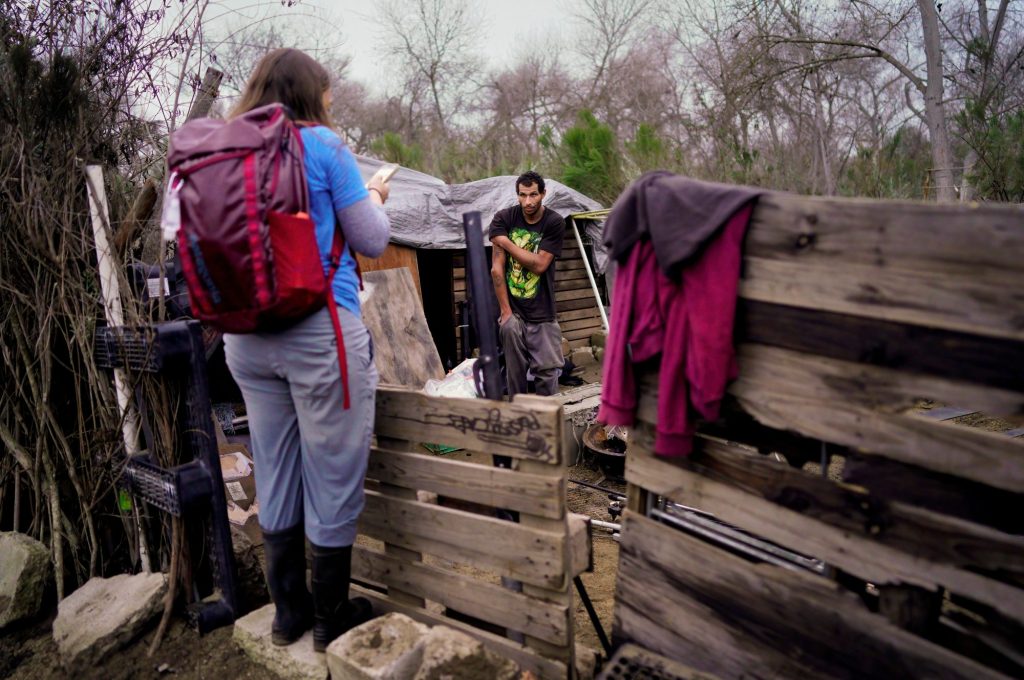
With federal funding on the line and a president in office who wants to upend longstanding homelessness policies, more than a 1,000 people around San Diego County are again preparing to tally how many fellow residents do not have permanent housing.
The annual point-in-time count begins early Thursday and serves as one of the most prominent ways for quantifying what is perhaps the region’s most visible crisis.
Officials are still looking for an additional 100 volunteers to conduct the one-day census.
“It’s an imperfect tool,” said Tamera Kohler, CEO of the Regional Task Force on Homelessness, which oversees the count. But it does give policymakers a number to work with, even if it’s considered an undercount, she added.
Last year’s tally found 10,605 individuals countywide without a steady place to live, an increase from 2023.
The count comes at a key moment for the region and nation. For one, the county is finally getting some good news regarding homelessness.
The task force uses a database called the Homeless Management Information System to track how many people ask for help each month, and in November and December there were more homeless people getting housing than individuals losing a place to stay, meaning the crisis contracted for the first time since early 2022.

Leaders hope a census of the overall population will similarly show a drop.
Two, this year’s point-in-time count will be the last before President Donald Trump potentially upends the economy through tariffs that experts fear will raise everyone’s cost of living, and the federal government’s approach to homelessness, which has long prioritized getting people into housing before other problems are addressed. Trump’s first administration unsuccessfully tried to roll back that Housing First policy, and during the most recent campaign the president said he wanted to crack down on encampments.
U.S. Rep. Scott Peters, a Democrat who represents coastal San Diego and inland North County in Congress, said he believes common ground could be found when it came to the president’s call for more housing. “I intend to hold him to his word,” Peters said in statement, and “to advance legislation that helps us build more housing to bring down costs and reduce homelessness.”
Peters added that Thursday’s tally could make the case that San Diego needs more support from Washington D.C., as the amount of federal aid each region receives is determined by a methodology that many local leaders believe is flawed. “The data collected from the count is critical to explaining how unbalanced the … formula is,” he said.
Furthermore, the census can help officials better understand the ongoing effects of the region’s camping bans. Several cities around the county have in recent years passed ordinances that boosted penalties for sleeping outside — the list includes Poway, Escondido and Chula Vista — and the U.S. Supreme Court ruled in June that tent camps may be cleared regardless of whether shelter is available.

Last year’s point-in-time count appeared to show that, in the wake of a camping ban passed in the city of San Diego, some homeless people traded downtown for other nearby neighborhoods.
Counties must conduct point-in-time counts to be eligible for federal funding through the U.S. Department of Housing and Urban Development, which pays for a substantial portion of all homelessness aid nationwide. Volunteers in San Diego are also armed with a questionnaire that has previously helped flag disturbing trends, such as a rise in homeless families and older adults.
Leaders hope around 1,650 people eventually sign up to help out, including outreach workers and staffers from service organizations. Kohler estimated that the tally costs between $30,000 and $40,000, some of which pays for hygiene kits, socks and $10 gift cards to places like 7-Eleven that are handed out during the count.
The results take months to calculate and likely won’t be released until this summer.
Residents can sign up to volunteer at sandiego.pointintime.info.






